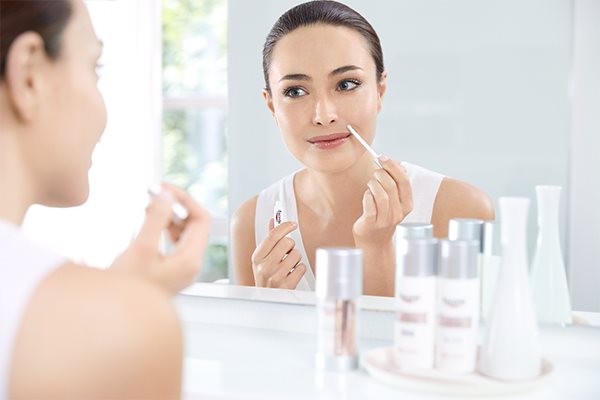Hyperpigmentation is a common skin condition characterized by darkened areas of the skin. It occurs when there is an excess production of melanin, the pigment responsible for skin color. Although hyperpigmentation is generally harmless, it can be a cosmetic concern for many individuals. Fortunately, various treatments are available to help reduce its appearance. In this article, we will explore the causes of hyperpigmentation and the top treatments to try.
Understanding Hyperpigmentation: Causes and Types
Hyperpigmentation can be caused by several factors. Firstly, sun exposure is one of the most common causes. Ultraviolet (UV) rays stimulate melanin production, leading to sunspots or age spots. Secondly, hormonal changes can trigger melasma, a type of hyperpigmentation often seen during pregnancy or with the use of birth control pills. Additionally, post-inflammatory hyperpigmentation can occur following skin injuries, such as acne, eczema, or burns.
There are different types of hyperpigmentation, each with distinct characteristics. Sunspots, also known as solar lentigines, are small, darkened patches caused by prolonged sun exposure. Melasma presents as larger, dark patches often found on the face. Lastly, post-inflammatory hyperpigmentation appears as dark spots at the site of skin injury or inflammation.
Topical Treatments: Over-the-Counter and Prescription Options
Topical treatments are a popular choice for managing hyperpigmentation. These treatments can be categorized into over-the-counter (OTC) products and prescription medications. OTC products often contain ingredients like hydroquinone, which inhibits melanin production, and retinoids, which promote cell turnover. Additionally, products with vitamin C and niacinamide can help lighten dark spots and even out skin tone.
Prescription treatments are typically more potent. Dermatologists may prescribe stronger formulations of hydroquinone or retinoids. Moreover, azelaic acid and corticosteroids can be prescribed to reduce inflammation and lighten hyperpigmented areas. It is important to use these treatments under the guidance of a healthcare professional, as they may have side effects if used incorrectly.
Professional Procedures: Chemical Peels, Laser Therapy, and More
For more stubborn cases of hyperpigmentation, professional procedures may be necessary. Chemical peels involve the application of a chemical solution to exfoliate the top layer of skin, promoting the growth of new, evenly pigmented skin. Different types of peels, such as glycolic acid and salicylic acid peels, can be used depending on the severity of the hyperpigmentation.
Laser therapy is another effective treatment. It uses focused light to target and break down melanin deposits. Various laser types, including fractional lasers and intense pulsed light (IPL) therapy, can be used to treat hyperpigmentation. Additionally, microdermabrasion and dermabrasion are mechanical exfoliation techniques that remove the outer layer of skin, promoting new skin growth and reducing pigmentation.
Natural Remedies: Gentle and Effective Home Treatments
Natural remedies can also help manage hyperpigmentation. While these treatments may not be as potent as professional procedures, they can be gentle and effective for mild cases. Aloe vera, for example, contains aloin, a natural depigmenting compound that can lighten dark spots. Applying aloe vera gel directly to the affected areas can help reduce pigmentation.
Lemon juice is another popular natural remedy. It contains citric acid, which has natural bleaching properties. However, it is important to dilute lemon juice with water to avoid skin irritation. Applying diluted lemon juice to dark spots and rinsing it off after a few minutes can gradually lighten pigmentation. Additionally, using honey and turmeric masks can help brighten the skin and reduce the appearance of dark spots.
Preventive Measures: Protecting Your Skin from Future Hyperpigmentation
Preventing hyperpigmentation is just as important as treating it. Sun protection is crucial, as UV exposure can worsen pigmentation. Wearing broad-spectrum sunscreen with an SPF of 30 or higher and reapplying it every two hours can help protect the skin. Additionally, wearing protective clothing, such as hats and sunglasses, can provide extra protection from the sun.
Furthermore, avoiding picking at acne or other skin injuries can prevent post-inflammatory hyperpigmentation. Using gentle skincare products and avoiding harsh treatments that can irritate the skin is also important. Maintaining a consistent skincare routine that includes regular exfoliation and moisturizing can help keep the skin healthy and reduce the risk of hyperpigmentation.
Hyperpigmentation is a common skin condition that can be effectively managed with the right treatments. Whether you choose topical treatments, professional procedures, natural remedies, or preventive measures, it is important to find a solution that works for your skin type and condition. By understanding the causes of hyperpigmentation and exploring various treatment options, you can achieve a more even and radiant complexion.










